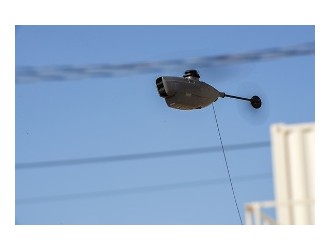
Joining NBAA in the petition are the Santa Monica Airport Association, SMO-based maintenance businesses Bill's Air Center and Kim Davidson Aviation and local operators Redgate Partners and Wonderful Citrus.
NBAA and others are continuing to pursue other legal options, including administrative complaints that are not subject to the settlement agreement. These include a Part 16 complaint filed by NBAA and airport supporters, “alleging that the city has mishandled airport finances, landing fees and other terms, in part through continued failure to offer leases to longstanding aviation-related businesses on the field.”
Meanwhile, Santa Monica mayor Ted Winterer assured attendees at an anti-airport rally on February 4 that the city will shorten the runway within six months. Funds to pay for the runway shortening will come from airport revenues, and he said the city will not take any federal money to help pay for the runway modifications to avoid taking on additional grant assurance obligations.
Aviation stakeholders were surprised at the FAA’s agreement to allow Santa Monica to close its airport, especially considering the fact that the city signed an instrument of transfer in 1948, in which it agreed to keep the airport open in perpetuity. Winterer acknowledged this during the rally, telling members of the crowd that the city council voted (by a four-to-three margin) to sign the settlement agreement with the FAA because there was no guarantee that the city would prevail in the ongoing lawsuit with the FAA. Many in the anti-airport crowd criticized the city for agreeing to keep the airport open for another 12 years.
“Those of us who voted for this consent decree did so for two reasons,” he explained. “First of which, the prospect of a lengthy litigation regarding our claims at Santa Monica Airport. We bought a lot of lawyers, and those very expensive lawyers, rather than taking a payday to continue lawsuits for years to come, recommended that this deal is the best they’d ever seen from the FAA. The FAA’s never agreed to close an airport like this.
“We had filed a constitutional claim against the 1948 instrument of transfer, an agreement the city of Santa Monica entered into to operate this airport in perpetuity. We filed that lawsuit three years ago, it was dismissed, remanded back to [the judge] on appeal, [and would be heard] at the end of 2017. Four years of litigation just to get back wher we started. We face the prospect of that then being appealed, potentially being remanded back to [the judge], many more years of litigation, all that time during that litigation, that airport over there would operate exactly the way it’s operating today.”
The FAA claimed that it signed the settlement agreement because “it strikes an appropriate balance between the public's interest in making local decisions about land-use practices and its interests in safe and efficient aviation services.”
The planned reduction of SMO’s runway not only will curtail operation of larger jets at the airport, but it will also prevent many jet charter operations from using SMO because of regulatory runway length requirements. JetSuiteX had planned to begin flying customers out of SMO to Carlsbad and San Jose, Calif., on February 6, but recently entered into a standstill agreement with the city of Santa Monica, due to the uncertainty surrounding the airport’s status. once the runway is shortened, none of JetSuiteX’s—or parent company JetSuite’s—airplanes would be able to fly into Santa Monica on charter trips.





